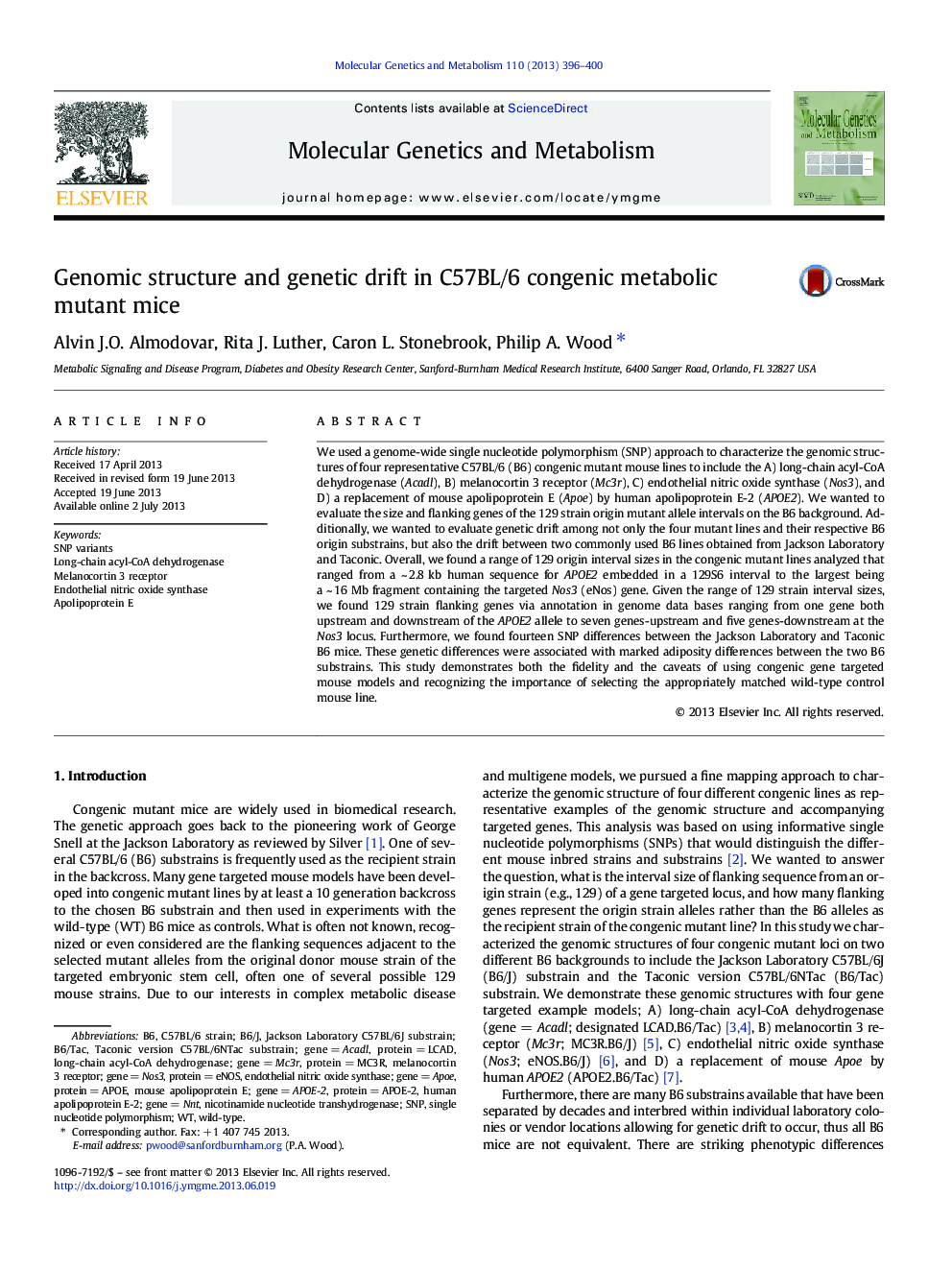| Article ID | Journal | Published Year | Pages | File Type |
|---|---|---|---|---|
| 10833228 | Molecular Genetics and Metabolism | 2013 | 5 Pages |
Abstract
We used a genome-wide single nucleotide polymorphism (SNP) approach to characterize the genomic structures of four representative C57BL/6 (B6) congenic mutant mouse lines to include the A) long-chain acyl-CoA dehydrogenase (Acadl), B) melanocortin 3 receptor (Mc3r), C) endothelial nitric oxide synthase (Nos3), and D) a replacement of mouse apolipoprotein E (Apoe) by human apolipoprotein E-2 (APOE2). We wanted to evaluate the size and flanking genes of the 129 strain origin mutant allele intervals on the B6 background. Additionally, we wanted to evaluate genetic drift among not only the four mutant lines and their respective B6 origin substrains, but also the drift between two commonly used B6 lines obtained from Jackson Laboratory and Taconic. Overall, we found a range of 129 origin interval sizes in the congenic mutant lines analyzed that ranged from a ~Â 2.8Â kb human sequence for APOE2 embedded in a 129S6 interval to the largest being a ~Â 16Â Mb fragment containing the targeted Nos3 (eNos) gene. Given the range of 129 strain interval sizes, we found 129 strain flanking genes via annotation in genome data bases ranging from one gene both upstream and downstream of the APOE2 allele to seven genes-upstream and five genes-downstream at the Nos3 locus. Furthermore, we found fourteen SNP differences between the Jackson Laboratory and Taconic B6 mice. These genetic differences were associated with marked adiposity differences between the two B6 substrains. This study demonstrates both the fidelity and the caveats of using congenic gene targeted mouse models and recognizing the importance of selecting the appropriately matched wild-type control mouse line.
Keywords
Related Topics
Life Sciences
Biochemistry, Genetics and Molecular Biology
Biochemistry
Authors
Alvin J.O. Almodovar, Rita J. Luther, Caron L. Stonebrook, Philip A. Wood,
